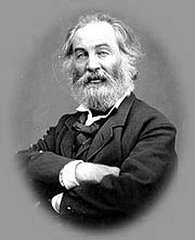
Clichés are empty-thought fillers whose contents have nothing to do with the user’s content (head or heart). They are used mostly out of habit but grow to the point where they can dehumanize the user and the person receiving the clichéd messages. Occasionally someone comes along and prods our consciousness into becoming aware of our reliance on these clichés. In the visual arts we have seen how Magritte shook the viewer out of his/her complacency through shocking images like The Lovers II. In that case the image of lovers embracing blind to each other took the cliché (love is blind), and brought it back to life in a fresh way. The typical reading of “love is blind” is of the delusional view of the other that being in love engenders. Magritte turns the cliché back on the viewer showing the horror of embracing someone while deliberately blinding yourself. He breathes life back into the cliché – declichéing the cliché.
Another approach comes through an admirer of René Magritte: Jasper Johns. What Johns does is to show you something that your cliché ridden mind is used to looking at in its clipthought-like way and show how it is not what you thought it was. Look at John’ Target with Four Faces (1955). The word “target” in typical cliché manner conceals the other possible readings of the image. Once you have heard (read) the word “target” then the image corresponds to the preconceived thought – you see a target. However – could this not be four concentric circles or four Os, or four zeros. Or could you be looking up to a red ceiling with a hole in it looking out into the blue sky and in that sky are floating yellow circles? Or could it be a yellow sky with blue floating circles? Or could it be a series of globes one in front of another? Or . . . perhaps it’s an eye staring at you. There are lots more possibilities – the point is that it is YOUR view, one you have thought about and have come to on your own that determines what you see. So here we have meanings sliding into meanings confounding thought. As Johns himself said about his paintings: “And in looking at such an object you may have a sense that there’s something at work that you don’t see. Many things are like that, aren’t they? That’s one of the ways that science and art develop. One feels that there is something that isn’t evident and one tries to find what it is.” This is cliché busting business. His creations come from reflection and encourage thought: “one tries to find what it is.” This is the exact opposite of the cliché which is born of laziness and bad habits and encourages in its response the same. In response to a clichéd thought or image one turns away and does not try to find what is there – because there is no there there.
Another approach comes through an admirer of René Magritte: Jasper Johns. What Johns does is to show you something that your cliché ridden mind is used to looking at in its clipthought-like way and show how it is not what you thought it was. Look at John’ Target with Four Faces (1955). The word “target” in typical cliché manner conceals the other possible readings of the image. Once you have heard (read) the word “target” then the image corresponds to the preconceived thought – you see a target. However – could this not be four concentric circles or four Os, or four zeros. Or could you be looking up to a red ceiling with a hole in it looking out into the blue sky and in that sky are floating yellow circles? Or could it be a yellow sky with blue floating circles? Or could it be a series of globes one in front of another? Or . . . perhaps it’s an eye staring at you. There are lots more possibilities – the point is that it is YOUR view, one you have thought about and have come to on your own that determines what you see. So here we have meanings sliding into meanings confounding thought. As Johns himself said about his paintings: “And in looking at such an object you may have a sense that there’s something at work that you don’t see. Many things are like that, aren’t they? That’s one of the ways that science and art develop. One feels that there is something that isn’t evident and one tries to find what it is.” This is cliché busting business. His creations come from reflection and encourage thought: “one tries to find what it is.” This is the exact opposite of the cliché which is born of laziness and bad habits and encourages in its response the same. In response to a clichéd thought or image one turns away and does not try to find what is there – because there is no there there.





No comments:
Post a Comment